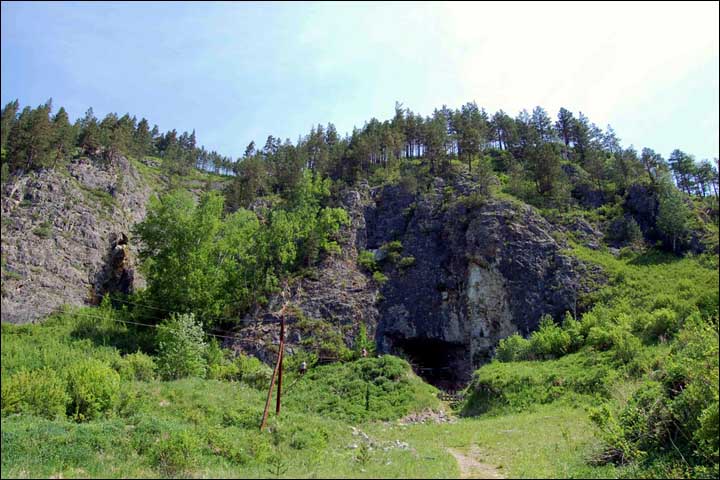 |
| Tibetans |
The evidence that archaic, diversifying human populations behaved like a ring species over Europe and Asia just keeps on accumulating.
A couple of years ago I blogged about how a research team led by Rasmus Nielsen of the University of California, Berkeley, USA found that Tibetans differ from the Han Chinese by about thirty genes and most of these genes control how the body responds to altitudes.
This was a case of very rapid human adaptive evolution over a period as short as 3-6,000 years during which the Tibetan population adapted to oxygen levels on the high Tibetan Plateau some 40% lower than at sea level.
The body's normal response to an increase in altitude or a sudden drop in oxygen levels is basically the same response as that to large blood loss. A hormone produced by the kidneys stimulates red blood cell production in the bone marrow until the oxygen carrying capacity of the blood is restores to its former level. This is just fine for a short-term measure and for replacing blood loss where the blood volume also increases, but for adaptation to lower oxygen levels it also increases the thickness of the blood which means blood pressure must also increase to push it through the smaller blood vessels.
Over the long term, this raised blood pressure and increased viscosity causes altitude sickness and even early death. In addition, conception is more difficult and fetal death more common so Han Chinese who move into high Tibet have an infant mortality rate three times that of Tibetans. As Rasmus Nielsen said at the time, "For such a very strong change, a lot of people would have had to die simply due to the fact that they had the wrong version of a gene".
The researchers found that the genetic changes improved the oxygen efficiency of the body and at the same time reduced its tendency to make more blood cells because the kidneys don't suffer from a lack of oxygen. What might be seen as a maladaptive mutation at lower levels became an adaptive mutation at high altitude. I used that at the time to show how meaning can change for the same information because meaning is specific to the environment. Change the environment and the meaning of genetic information can change, giving the lie to the absurd creationist claim that no new information can arise in the genome.
Now the same team has found that the adaptation might not have been due to a fortuitous mutation after all. One of the genes involved is EPAS1, the Tibetan version of which is believed to have come from the ancestors of the Nepalese Sherpa people and spread rapidly through the population about 30,000 years ago indicating significant adaptive benefits. They compared this gene to the same gene in other populations from around the world and found it was unique to Tibetans amongst all living populations.
 |
| Denisova Cave, Siberia |
It's now clear that there was a time during which Homo sapiens moving out of Africa, having evolved there from a common ancestor with H. neanderthalensis and the 'Denisovan' hominids (who have yet to be assigned a specific name) and these three species acted like an incompletely speciated ring species able to interbreed at least occasionally and at least in parts of their range. In the same way that Europeans probably short-circuited evolution by acquiring genes evolved over 250,000 years in Europe by our Neanderthal cousins and so were able to expand rapidly into an environment alien to them but home to Neanderthals, so it looks like the immediate ancestors of the Nepalese Sherpas took a similar shortcut but one which wasn't especially useful until they in turn passed it on to the Han Chinese who were moving up into the Tibetan plateau.
 Not that there was any conscious decision in this of course. It matters not to a gene whether it is acquired by mutation of by inheritance. Once it's in the population its relative success or failure will depend on what competition it finds itself up against and what is advantageous or disadvantageous in the given environment.
Not that there was any conscious decision in this of course. It matters not to a gene whether it is acquired by mutation of by inheritance. Once it's in the population its relative success or failure will depend on what competition it finds itself up against and what is advantageous or disadvantageous in the given environment.More work is needed to confirm that this is Denisovan DNA and not DNA acquired from Neanderthals as some people think. Neanderthals and Denisovans has very similar EPAS1 genes and the known distribution of Neanderthals places them closer to the probable origin of the Nepalese, with the Denisovans believed to be mainly in south-east Asia, but the matter is academic so far as interbreeding between the different hominid species is concerned. If it is confirmed, the relationship diagram, especially when interbreeding occurred, will need to be revised.
Whether from Denisovans or Neanderthals the Tibetans have acquired an important gene giving them the ability to live where few other people can and to tolerate low levels of oxygen which would make life very difficult for people without it. At lower altitudes, in modern humans, the same gene would be a distinct disadvantage but having acquired it somehow, the recent ancestors of the modern Tibetans were able to move into virgin territory which humans had probably never lived in before.
The question now is why did the Denisovans or Neanderthals evolve this form of the EPAS1 gene?
'via Blog this'


No comments :
Post a Comment
Obscene, threatening or obnoxious messages, preaching, abuse and spam will be removed, as will anything by known Internet trolls and stalkers, by known sock-puppet accounts and anything not connected with the post,
A claim made without evidence can be dismissed without evidence. Remember: your opinion is not an established fact unless corroborated.